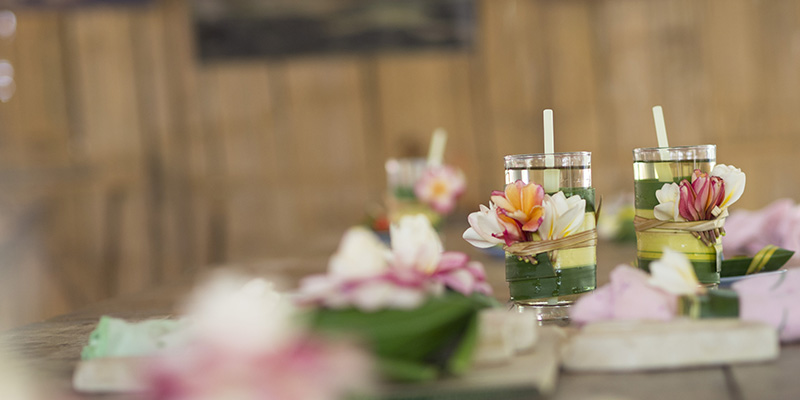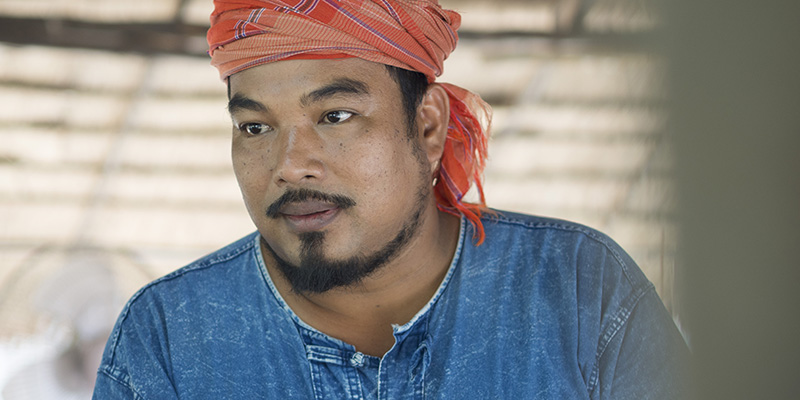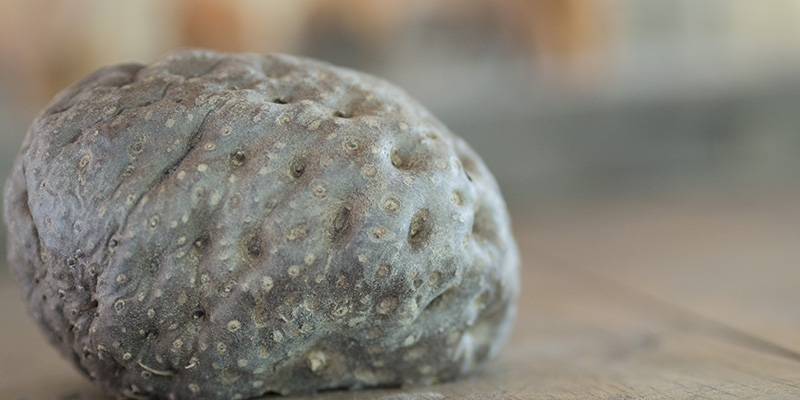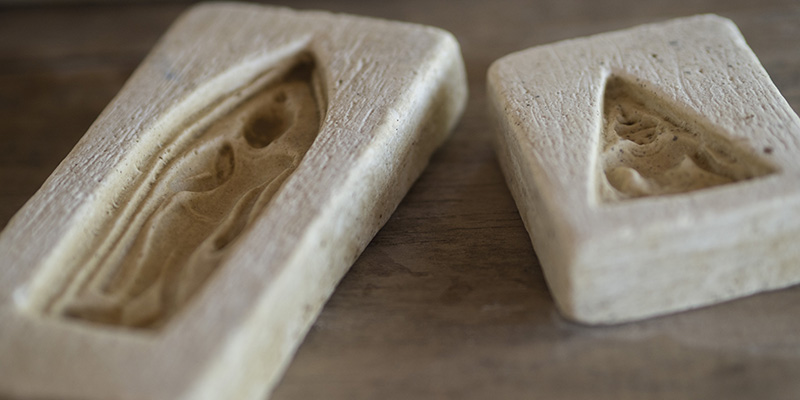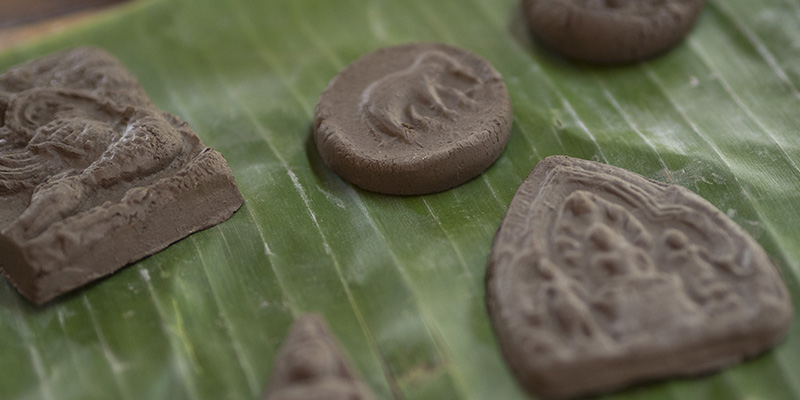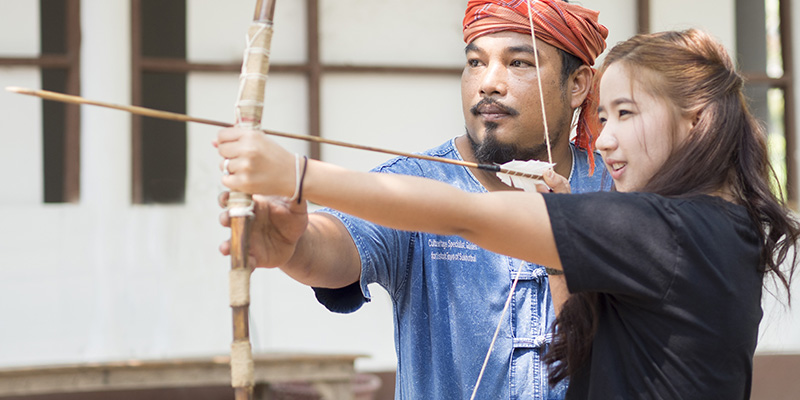Baan Phra Pim Muang Sukhothai
recall the origin of votive tablet, land of Phra Ruang
(Action activity, Sukhothai Old City)
สุโขทัย Sukhothai – Si Satchanalai Old City, historical town, where has many underground hiding places in ancient remains. This place is well known in Phra Pim Sukhothai. There are more 1200 kinds of Phra Pim which was explored and Bann Phra Pim Muangkao Sukhothai has collected 450 types to reserve and inherit to next generations. The valuable thing is still no gradually disintegrated and disappeared as time goes. "Baan Phra Pim Muang Sukhothai" " intends and ascertains to keep on "Phra Pim " to live in the land of Phra Ruang. Therefore, all mentioned before is the beginning of the first and the only "Phra Pim " Learning Center in Sukhothai Old City
Baan Phra Pim Muang Sukhothai is established in 2007 by Khun Narongchai To-In (Khun Kob) and Khun Yarnnaphat To-In (Khun Kaem) who have belief in different Phra Pim and encourage"Pim Phra" activity with supporting of DASTA to come into make an original votive tablet to stay with succession forever. Formerly, the old name of Baan Phra Pim Muang Sukhothai was ""Baan Phra Pim Laksanasin" and has changed its name in 2017 as "Baan Phra Pim Muang Sukhothai"
Nowadays "Baan Phra Pim Muang Sukhothai" is a historical, story, procedure learning center of Phra Pim Muang Sukhothai-Si Satchanalai that is an important cultural heritage of Muang Sukhothai. This place is a learning source of art pattern and characteristic of votive tablets. Votive tablet is also shown about intense faith and belief in Buddha of people lived in Sukhothai Territory in the past to build awareness for being proud of nationhood, region, and the King since former time to now of Thailand as our motto persist in that is ""Historical Art, Foundation of Race"
Besides learning about the background, and the story of votive tablets "Baan Phra Pim Muang Sukhothai" is prepared activities for tourists to create special experience for enhancing knowledge with participating learning activity about making votive tablets with varied process such as algorithm of soil preparation, moulding,
and burning process to get harden baked clay votive tablet. Making votive tablet is not only toward the procedure of cultural heritage learning of the attraction area, but also tourists participate in succeed to
Buddha as ancient moral precept of Thai which admires to make baked clay votive tablets for offering to Buddha
Baan Phra Pim Muang Sukhothai is established in 2007 by Khun Narongchai To-In (Khun Kob) and Khun Yarnnaphat To-In (Khun Kaem) who have belief in different Phra Pim and encourage"Pim Phra" activity with supporting of DASTA to come into make an original votive tablet to stay with succession forever. Formerly, the old name of Baan Phra Pim Muang Sukhothai was ""Baan Phra Pim Laksanasin" and has changed its name in 2017 as "Baan Phra Pim Muang Sukhothai"
Nowadays "Baan Phra Pim Muang Sukhothai" is a historical, story, procedure learning center of Phra Pim Muang Sukhothai-Si Satchanalai that is an important cultural heritage of Muang Sukhothai. This place is a learning source of art pattern and characteristic of votive tablets. Votive tablet is also shown about intense faith and belief in Buddha of people lived in Sukhothai Territory in the past to build awareness for being proud of nationhood, region, and the King since former time to now of Thailand as our motto persist in that is ""Historical Art, Foundation of Race"
Besides learning about the background, and the story of votive tablets "Baan Phra Pim Muang Sukhothai" is prepared activities for tourists to create special experience for enhancing knowledge with participating learning activity about making votive tablets with varied process such as algorithm of soil preparation, moulding, and burning process to get harden baked clay votive tablet. Making votive tablet is not only toward the procedure of cultural heritage learning of the attraction area, but also tourists participate in succeed to Buddha as ancient moral precept of Thai which admires to make baked clay votive tablets for offering to Buddha
